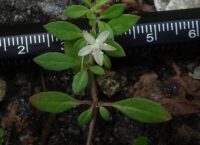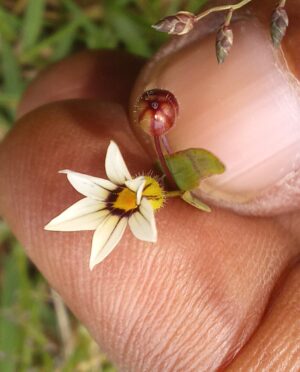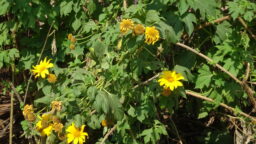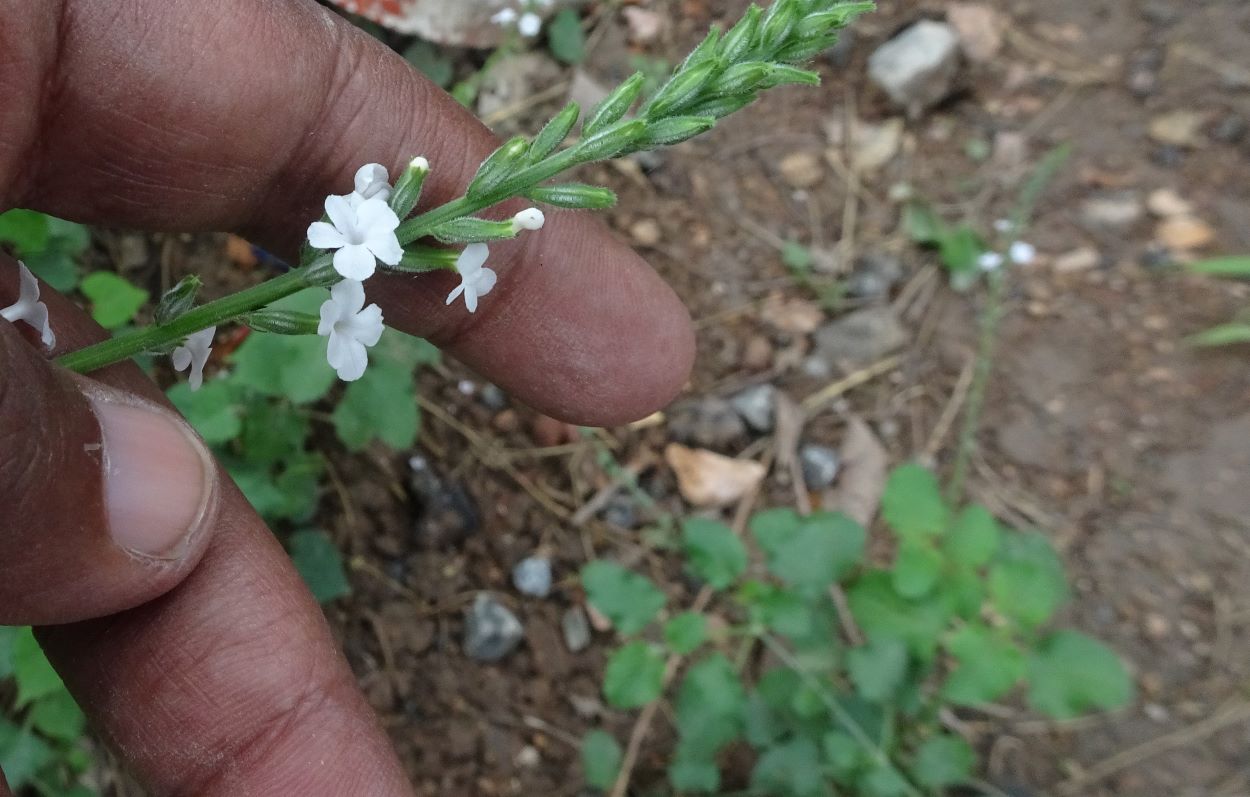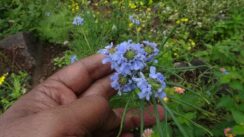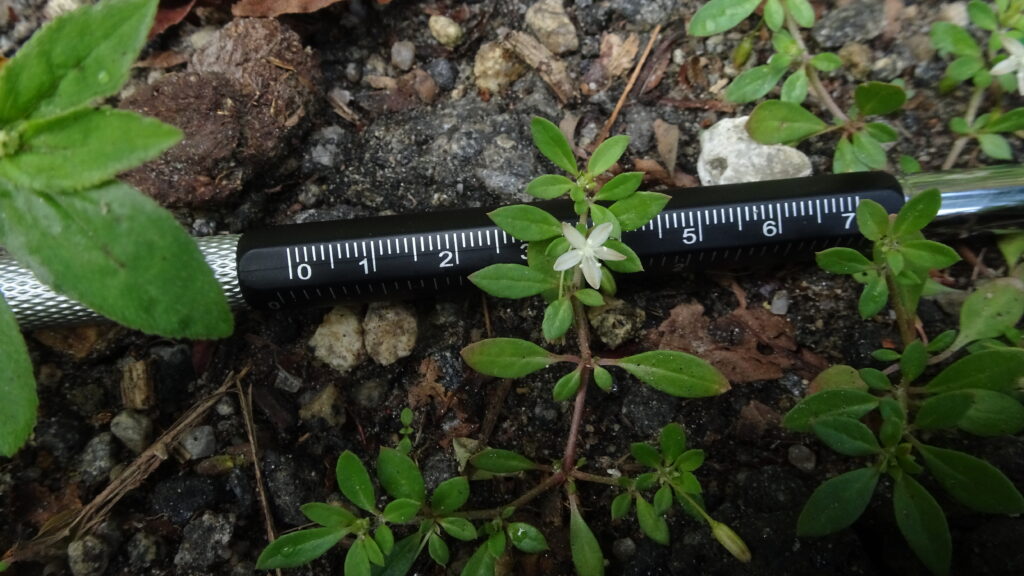
Tamil name: Thurai Poondu. The plant is often seen near damp sandy soil areas. It is a much branched prostrate herb. It forms extensive mats on the floor which extend to more than 40 cm. The plant is glabrous with leaves seen in whorls of 3-5 numbers (of differing sizes) arranged in opposite manner. The leaves are obovate-spathulate in shape with base attenuate and apex acute. The leaf margin is sparsely teethed. The flowers are whitish-green in color (tepals). The flower has five stamens which alter with five staminodes (sterile stamen). Another plant belonging to the same genus, G lotoides is also seen in India. While G lotoides is stellate tomentose plant, G oppositifolius is mostly glabrescent. Another notable difference is that in G lotoides the flower has five styles while in the case of G oppositifolius it has only three. This Pan tropical plant is much valued for its varied medicinal applications over its growing range. In Tamilnadu the plant juice is considered to have antiseptic properties; also used to cure skin diseases. The leaves of the plant are used as vegetables by tribes in Amaravathi district of Maharashtra.
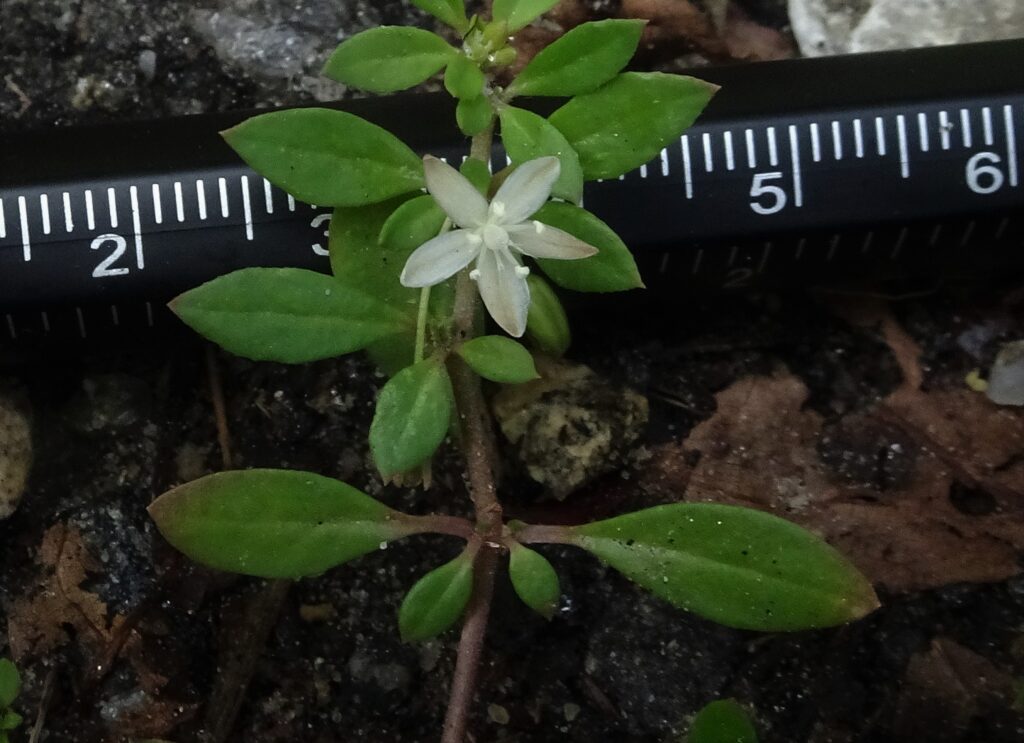
The five stamens alternating with five staminodes.

